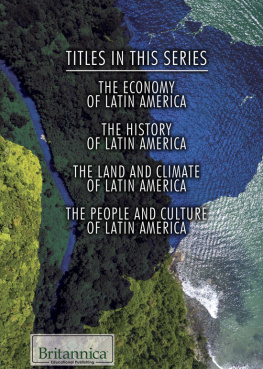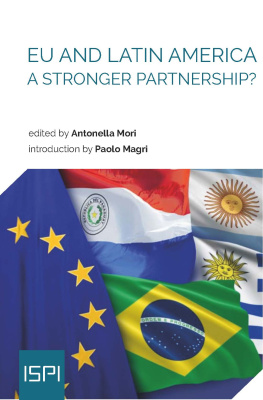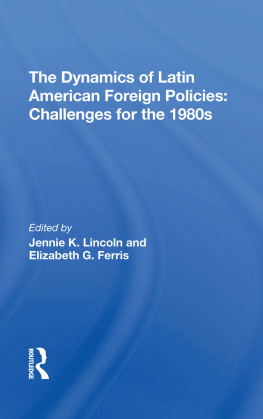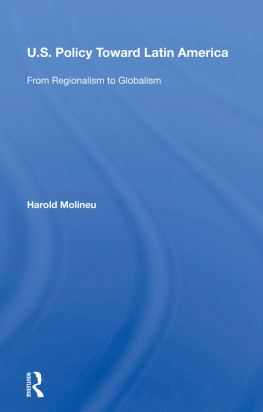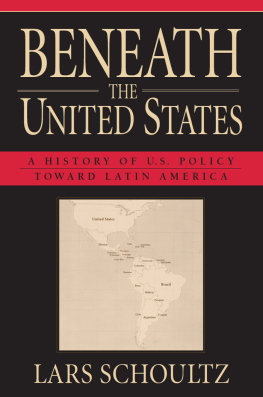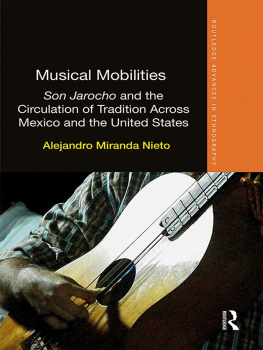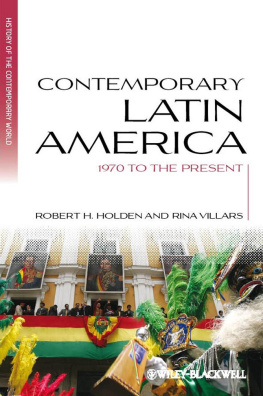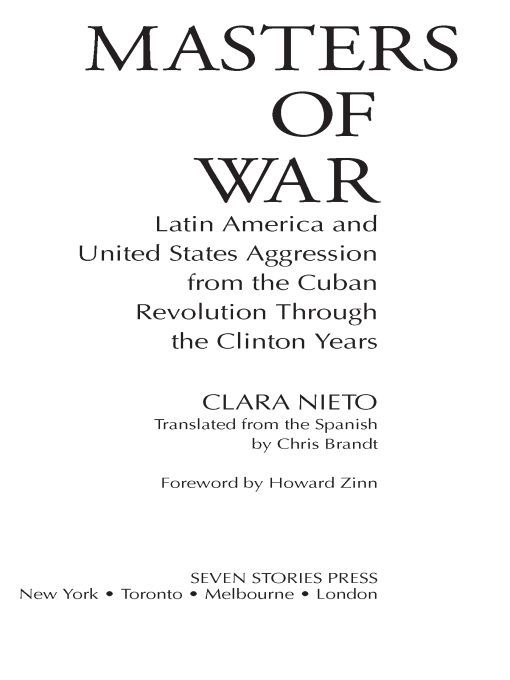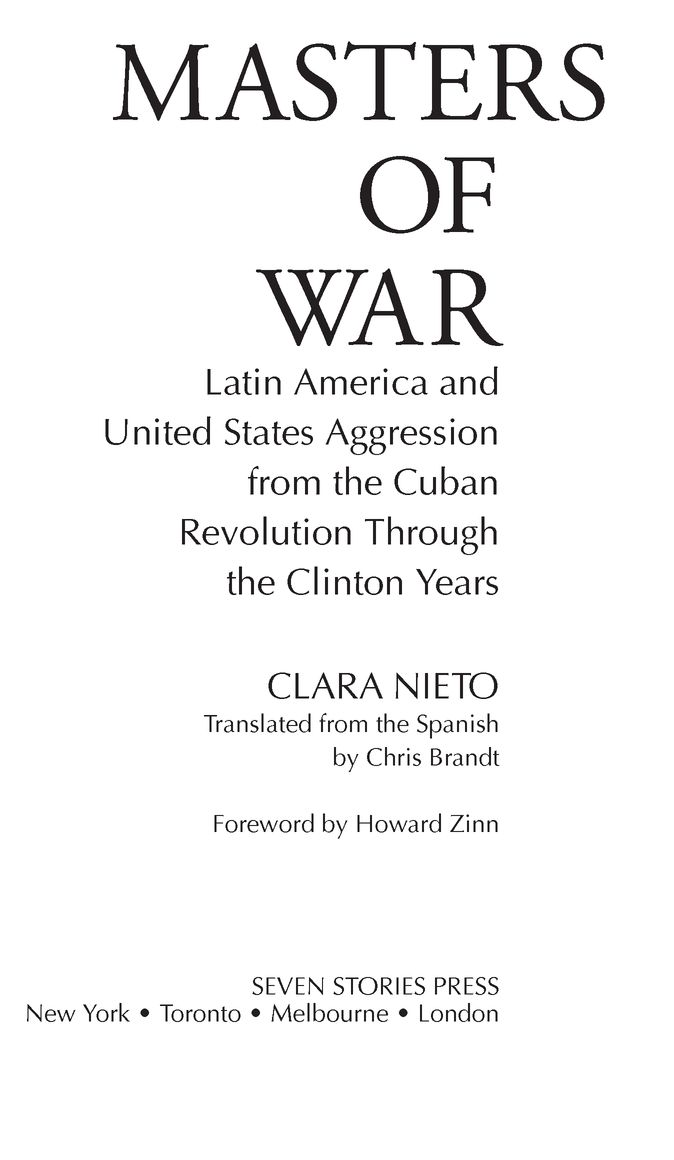Table of Contents
FOREWORD
by Howard Zinn
Anyone who has studied or taught in the schools and colleges of the United States must recognize that Latin America is shamefully neglected as an area of study. I suggest one possible reason for this neglect: to study the United States relations with Latin America would be embarrassing. Indeed, it might disrupt the naive view fostered by the educational system and the entire culturethe view that the United States is a benign force for democracy in the world.
In 1927 Undersecretary of State Robert Olds wrote a confidential memorandum to his colleagues: We do control the destinies of Central America. Until now Central America has always understood that governments which we recognize and support stay in power, while those which we do not recognize and support fall.
That statement would be an accurate description of the attitude of the United States government to all of Latin America, from the Monroe Doctrine of 1823 to the present day. It leads to a disturbing thought: that the United States has, throughout its history, been an aggressive, expansionist imperial power, especially in relation to Latin America.
As I write this, there are scattered news items: the United States is giving over a billion dollars to the government of Colombia to suppress a guerrilla movement; an embargo against Cuba, designed to strangle its economy and impoverish its people, remains in force; a high Peruvian official, Vladimoros Montesinos, implicated with corruption, torture, and death squads, turns out to have worked for the CIA.
But the newspapers and television networks that report these items give no historical context that would show they are part of an immense, complex pattern of the United States domination of Latin America.
This book, by the distinguished Latin American writer Clara Nieto, is exactly what is needed to supply the missing context for the superficial stories we find in the mass media and for the paltry treatment of Latin America we get in our educational system. We in the United States need badly to hear a Latin American point of view, and here we have it from a scholar of international repute.
Ms. Nieto provides us with a sweeping history of United States relations with Latin America. She begins and ends with Cuba, giving it special attention, but she also displays her solid knowledge of the rest of the continent. Her account, based on meticulous research and presented with clarity and grace, will be enormously useful for a long time to come.
PREFACE
HISTORY IN THE PRESENT TENSE
This book covers a cycle of history that divides the American hemisphere in two. It begins with the triumph of the Cuban Revolution on January 1, 1959, and ends with the collapse of the Soviet Union in December 1991, marking the end of the fifty-year Cold War and opening the way for global hegemony by the United States. The books focal point is the Cuban revolutionary process, a moving force for armed struggle and insurgency on the continent, and the United States policies designed to undermine the Revolution to keep it from reaching deeper into Latin America and the Caribbean, its natural zone of influence. Such policies have profound repercussions in these countries throughout this period.
In effect, Cuba becomes a factor in the East-West confrontation, in the Cold War, and in worldwide political debate, as well as a flash point of controversy in United States internal politics. For the first time a Latin American nationone of the smalleststood up to the Empire, threw it out of its territory, allied itself with the Soviet Union, and declared itself socialist. Cuba shattered the United States hegemony and threatened its security and continental stability. No other Latin American country has had a greater impact for as long a time in the international arena and in the third world. Havana emerged as the revolutionary epicenter and Fidel Castro and Che Guevara as rebel idols.
Fidels nationalist and anti-imperialist discourse encouraged the struggle of Latin American people to defend their rights and fight against the national governments and oligarchies allied with Washington. His discourse was a challenge and a threat. During the 1960s, armed pro-Castro movements rose up in dictatorships and democracies, with hopes of repeating the heroic Cuban deed. That insurgency was born out of aberrant and endemic social and economic inequalities, the misery of masses exploited and cheated by the ever-smaller numbers of the powerful, and the violent repression by official forces. The narrowness or absence of democratic channels prevented the peoples participation in the decisions made by their governments and parliaments.
The armed groups and the liberation movements of the third world were linked to Havana one way or another throughout these three decades. Havana provided them with political orientation, military training, arms, and advisers. Cuban troopswith help from the Soviet Unionassured the triumph of Angola and Ethiopia against their aggressors. Such aid disappeared in Latin America during the 1970s, when most of its governments reestablished diplomatic relations with Cuba and broke its isolation.
The changes brought about in the Catholic Church by Pope John XXIII, who oriented the churchs duties toward helping the poor and promoting social justice, also contributed to this explosion of revolutionary activity. Progressive sectors of the Church educated the poor about their rights, organized their movements, and took part in their struggles. This union of Christians and revolutionaries was enormously important for the Sandinista struggle against the Somoza dictatorship in Nicaragua and for the civil war against the military dictatorships in El Salvador led by the Farabundo Mart National Liberation Front.
Nine American administrationsthose of Dwight D. Eisenhower, John F. Kennedy, Lyndon B. Johnson, Richard Nixon, Gerald Ford, Jimmy Carter, Ronald Reagan, George Bush, and Bill Clintonmaintained a policy of greater or lesser aggression against Cuba, aiming to destroy the Cuban Revolution and Fidel Castro. Fearing Cubas role as an example to other nations and the expansion of international communism throughout the hemisphere, Kennedy reconsidered his policies toward Latin America. He set in motion the Alliance for Progress, a program of economic and social development to serve the immense needs of Latin and Caribbean countries, and gave a radical turn to the United States hemispheric defense strategies, focusing on counterinsurgency to fight the enemy within. But strengthening national armiesa cornerstone of that srategyalso strengthened militarism. During the three years of his administration, new military dictatorships overthrew constitutional governments under the banner of anti-Communism. During the 1960s, in the countries of the Southern Cone (Argentina, Brazil, Uruguay, and Chile), military dictatorships planted the doctrine of National Security, with anti-Commmunist and counterinsurgency objectives similar to Kennedys military strategy.
These decades (1960s-1980s) were marked by violence, civil wars, and confrontations between armed movements seeking radical change and military counter-insurgents trying to obstruct them. Many hundreds of men and women were murdered, tortured, and disappeared in what the military called internal wars, and the people called dirty wars. The vast majority were not killed in combat. Never before had the continent seen such brutal, massive, and profound violations of human rights.


